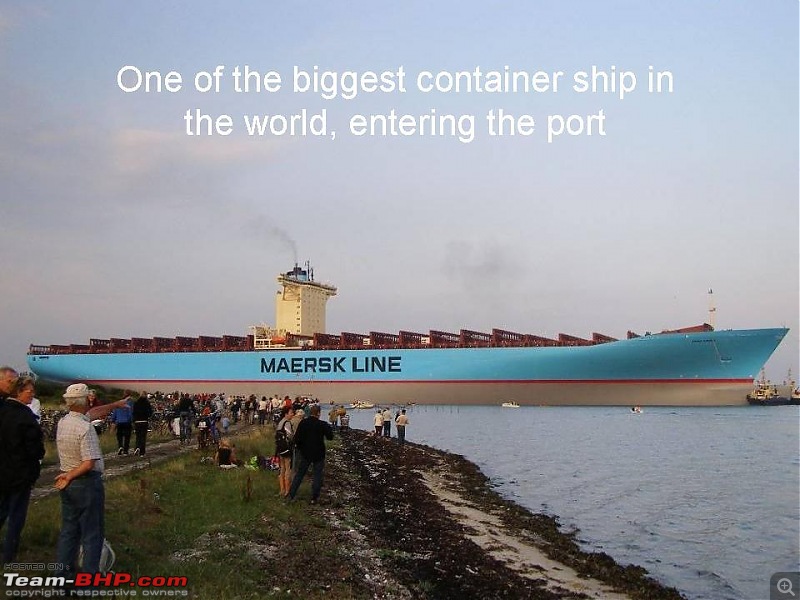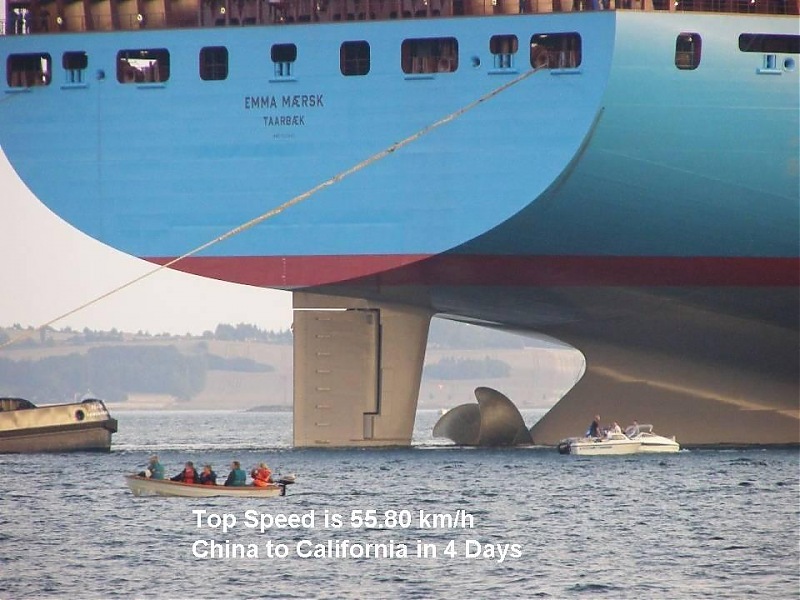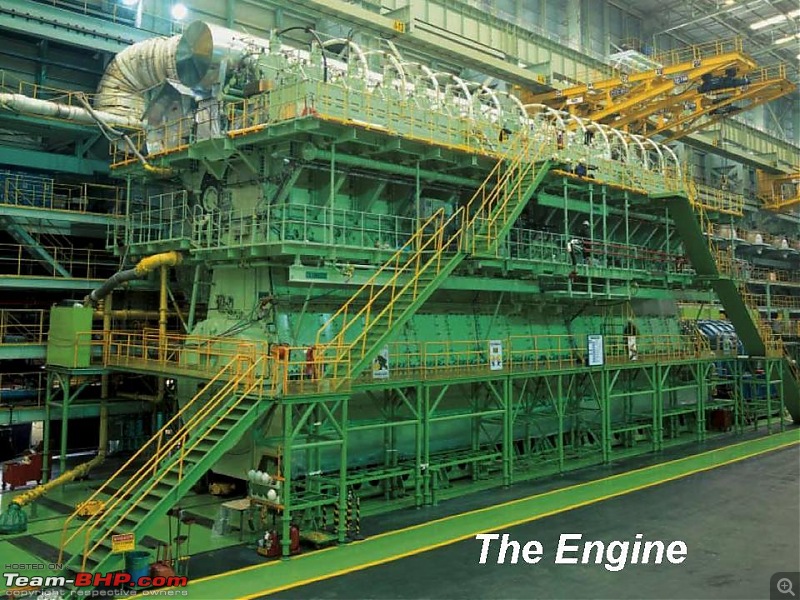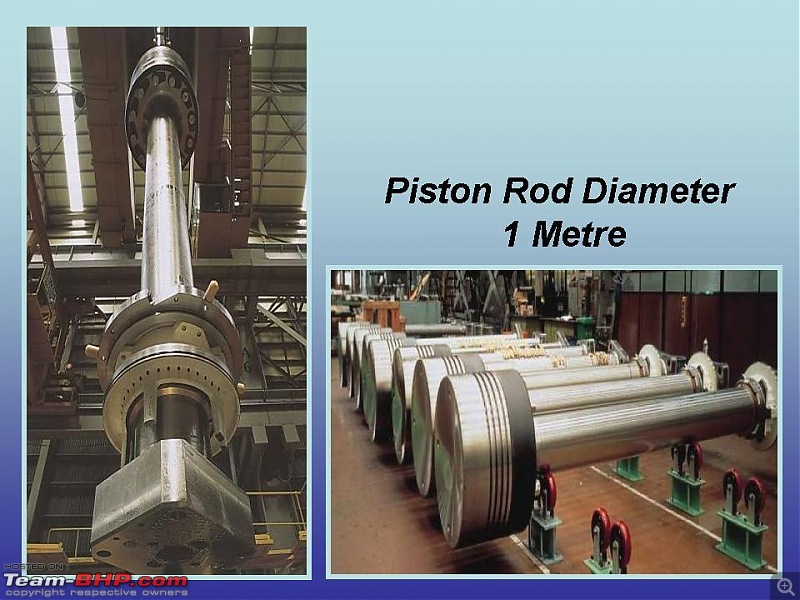Tuesday, December 17, 2013
Hot lay-up, Cold lay-up
Hot lay-up
Hot lay-up condition, the machinery is kept in operation for the sake of fast re-commissioning, but measures
may be taken to reduce various operational costs.
Cold lay-up
In cold lay-up condition the machinery is taken out of service and the vessel is kept “electrically dead” with the
exception of emergency power.
Hot lay-up condition, the machinery is kept in operation for the sake of fast re-commissioning, but measures
may be taken to reduce various operational costs.
Cold lay-up
In cold lay-up condition the machinery is taken out of service and the vessel is kept “electrically dead” with the
exception of emergency power.
Single Phasing of a Motor?
Single Phasing of a Motor?
Single Phasing is where one of the 3-phase's supplying the Motor becomes disconnected. The Motor will continue to run if this happens and can result in Motor Burnout. The effect of Single Phasing is to increase the Current in the two remaining Lines and cause the Motor to become very noisy due to uneven Torque produced
How is 15ppm reached in an Oily Water Separator?
How is
15ppm reached in an Oily Water Separator?
15ppm is
achieved in an Oily Water Separator by normally passing through a Two Stage
Separator where in the first stage Oil/Water is passed into the coarse
separating compartment. Here some oil will rise to the top of the Compartment
due to its lower density, Heating Coils may aid this.
The remaining Oil/Water will flow down into
the Fine separating Compartment and moves slowly between Catch Plates. More Oil will separate out onto the underside
of these Plates and travel outwards until free to rise to the oil collecting
space.
The almost Oil Free Water
(usually being at 100ppm at this stage) will then pass to the second stage of
the separator, which is a Filter Unit comprising of two Filter Units.
The first Filter Stage removes Physical
Impurities present and promotes some Fine Separation.
The second Stage Filter uses Coalescer Inserts
to achieve the fina, Oil/Water Mixture leaving this Stage at less
than 15ppm.
Why is Simultaneous Injection of Fuel Oil and Starting Air into a Main Engine Cylinder Undesirable and How is it Prevented?
Why is
Simultaneous Injection of Fuel Oil and Starting Air into a Main Engine Cylinder
Undesirable and How is it Prevented?
Simultaneous
Injection of Fuel and Starting Air into a Cylinder is Undesirable as it could
lead to an Explosion in the Start Air System.
It is
prevented by means of Interlock, which prevents Fuel being Injected when the
Air Start Auto Valve is Open.
The
Interlock Operates a Stop Solenoid, which keeps the Fuel Rack at Zero Position.
What are the Safety Devices fitted to an Air Compressor?
What are
the Safety Devices fitted to an Air Compressor?
Low Lub
Oil Pressure Shut Down
High Air
Temperature Shut Down
1st Stage
Relief Valve
2nd Stage
Relief Valve
A Fusible
Plug is fitted after the 2nd Stage Cooler, Set at 120°C
If Water
Cooled, a Jacket Water Safety Valve is fitted.
What is the Primary Function of the Expansion Valve in a Refrigeration System?
What is
the Primary Function of the Expansion Valve in a Refrigeration System?
The
Primary Function of an Expansion Valve in a Refrigeration System is to regulate
the Flow of Refrigerant from the H P side to the L P side of the System.
The
pressure drop causes the Saturation Temperature to drop, enabling it to boil
off at the Low Temperature of the Evaporator.
Cloverleafing-
Cloverleafing-
When the cyl l.o. has inadequate acid neutralising properties for the fuel being burnt or if there is insufficient quantity of oil injected then cloveleafing can occur
This is basically regions of corrosive wear midway between the quills and upwards towards the top of the liner. These areas may be visible due to the corrosive effect and they are cloverleaf shaped.
Eventually the rings become unsupported in these areas, gas builds up on the front face and the ring is subject to collapse.
When the cyl l.o. has inadequate acid neutralising properties for the fuel being burnt or if there is insufficient quantity of oil injected then cloveleafing can occur
This is basically regions of corrosive wear midway between the quills and upwards towards the top of the liner. These areas may be visible due to the corrosive effect and they are cloverleaf shaped.
Eventually the rings become unsupported in these areas, gas builds up on the front face and the ring is subject to collapse.
Improved High Lift safety valve material
Materials
for all parts must be non corrodible. Common materials are Bronze, Stainless
steel or Monel metal, depending on the conditions of service. The valve chest
is normally made of cast steel.
Boiler Burner Refractories
Refractories
A
material in solid form which is capable of maintaining its shape at high tempo
(furnace tempo as high as 1650oC) have been recorded.
Purpose
i. To
protect blr casing from overheating and distortion and the possible resulting
leakage of gasses into the machinery space.
ii. To reduce
heat loss and ensure acceptable cold faced temperature for operating personnel
iii. To
protect exposed parts of drum and headers which would otherwise become
overheated. Some tubes are similarly protected.
iv. Act as a
heat reservoir.
v. To be
used to form baffles for protective purposes or for directing gas flow.
Properties
i. Must have
good insulating properties.
ii. Must be
able to withstand high tempo's
iii. Must have
the mechanical strength to resist the forces set up by the adjacent refractory.
iv. Must be
able to withstand vibration.
v. Must be
able to withstand the cutting and abrasive action of the flame and dust
vi. Must be
able to expand and contract without cracking Note: no one refractory can be
used economically throughout the boiler
Types
i. Acid
materials- clay, silica, quartz , sandstone etc
ii. Neutral
materials-chromite, graphite, plumbago, alumina
iii. Alkaline
or base materials- lime, magnesia, zirconia
Forms
i. Firebricks-
these are made from natural clay containing alumina , silica and quartz. They
are shaped into bricks and fired in a kiln
ii. Monolithic
refractories- These are supplied in the unfired state, installed in the boiler
and fired in situ when the boiler is commissioned.
iii. Mouldable
refractory- This is used where direct exposure to radiant heat takes place. It
must be pounded into place during installation . It is made from natural clay
with added calcided fire clay which has been chrushed and graded.
iv. Plastic
chrome ore- This is bonded with clay and used for studded walls. It has little
strength and hence stud provides the support.
v. Castable
refractory-This is placed over water walls and other parts of the boiler were
it is protected from radiant heat . It is installed in a manner similar to
concreteing in building
vi. Insulating
materials- Blocks, bricks , sheets and powder are usually second line
refractories. I.E. Behind the furnace refractory which is exposed to the flame.
Material; asbestos millboard, magnesia , calcined magnesia block, diatomite
blocks, vermiculite etc. all having very low heat conductivity.
Purpose of fitting a Deaerator
Purpose of fitting a Deaerator
There are four main purposes;
·
To act as a storage tank so as to maintain a
level of water in the system
·
To keep a constant head on the feed system
and in particularly the Feed pumps.
·
Allow for mechanical deaeration of the water
·
Act as a contact feed heater.
Subscribe to:
Comments (Atom)




